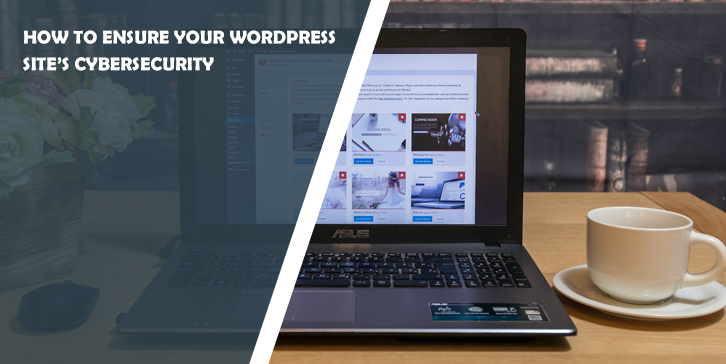WordPress has over 400 million users, making it a lucrative target for cybercriminals. In 2018, 90% of all hacked CMS websites were on WordPress. But only 2% of those attacks were because of a mistake in WordPress security. WordPress users are the ones making loads of mistakes.
From vulnerable plugins to weak passwords, let’s review how to ensure your WordPress site is cyber-secure.
Pick a secure host
One of the largest security factors for the safety of your WordPress site is the hosting provider. You shouldn’t go with the first option that pops up. Instead, spend a few hours researching.
You’ll run into ads promoting cheap hosts. But paying a low price leads to paying twice. Many people got their websites deleted by their hosts or breached because the host ignored cybersecurity.
Look for a top-notch company that performs daily malware scans. Good hosts also have 24/7 support, so any time you run into an issue, you can ask for help. To look like this: Look for a top-notch provider that performs daily malware scans and takes proactive security measures. Partnering with a company like Microminder CS, which specializes in cybersecurity services, can add an extra layer of protection to ensure your website stays secure. Good hosts also offer 24/7 support, so you can quickly resolve any issues as they arise.
Use strong passwords
Here’s a surprising fact. People still use “123456’ and ‘password’ as their main passwords. What’s even worse, those two combinations are the most popular passwords in 2023.
Any kid or grandma can breach your WordPress site if you use such a weak password. So, you should change your passwords every six months and make sure they have 12+ characters, including special symbols, numbers, and uppercase and lowercase letters.
Even if your password is more complicated than ‘qwerty,’ it’s not secure unless it follows the rules above. Hackers perform brute force attacks. They have special software that can guess tens of thousands of letter combinations in seconds. If you have a long and hard password, the time it takes for them to breach it increases exponentially.
Update PHP
PHP is a crucial component of your site. Whenever a new update rolls around, install it immediately.
Many breaches happen because users don’t update their sites.
Old versions of this code make your site run slowly and negatively influence performance. So you risk SEO rankings, cybersecurity issues, and user satisfaction if you don’t make the update.
Use secure plugins
Plugins are essential if you want your website to look quirky and wow visitors. But that comes at a high price. More than half of all WordPress breaches happen because users install unsecure plugins.
So pick your plugins wisely. Check the popular and featured ones, and read the reviews. After installing, make sure they’re updated to the latest version. Lots of plugins suffer from exploits and bugs, and not updating them could lead to a breach. Don’t give hackers the gateway they want.
Use 2FA
Two-factor authentication is an extra step when logging in that sends you an SMS message or shows a disappearing code. It isn’t as secure as something more advanced like OAuth 2.0, but it is a step in the right direction.
If a hacker guesses your username and password, they’d need your phone to log in. It’s a great way to strengthen your account, and it helps with file sharing. If you have the option to pick, always choose to receive codes through an authenticator app instead of SMS.
Add an SSL certification
Secure socket layer encryption is a must for every modern website. If you deal with payments and e-commerce, you must have this certificate.
If you don’t, hackers can perform a MITM attack to listen to the communication between visitors and your site. So when a user inserts their credit card data, hackers can save and abuse it.
The SSL certificate encrypts communication on the website. That way, even if a hacker intercepts the credit card data, they’ll see random characters that make no sense without a decryption key.
Limit login attempts
There’s one loophole that cyber attackers love to exploit on WordPress sites. And that’s login attempts. By default, you can try to log in as many times as you want in the admin panel. This is a great feature for people who easily forget their password. But hackers can abuse it to perform brute-force attacks without any penalty.
Limiting the number of times you can log in will stop hackers from trying to breach your admin passwords.

